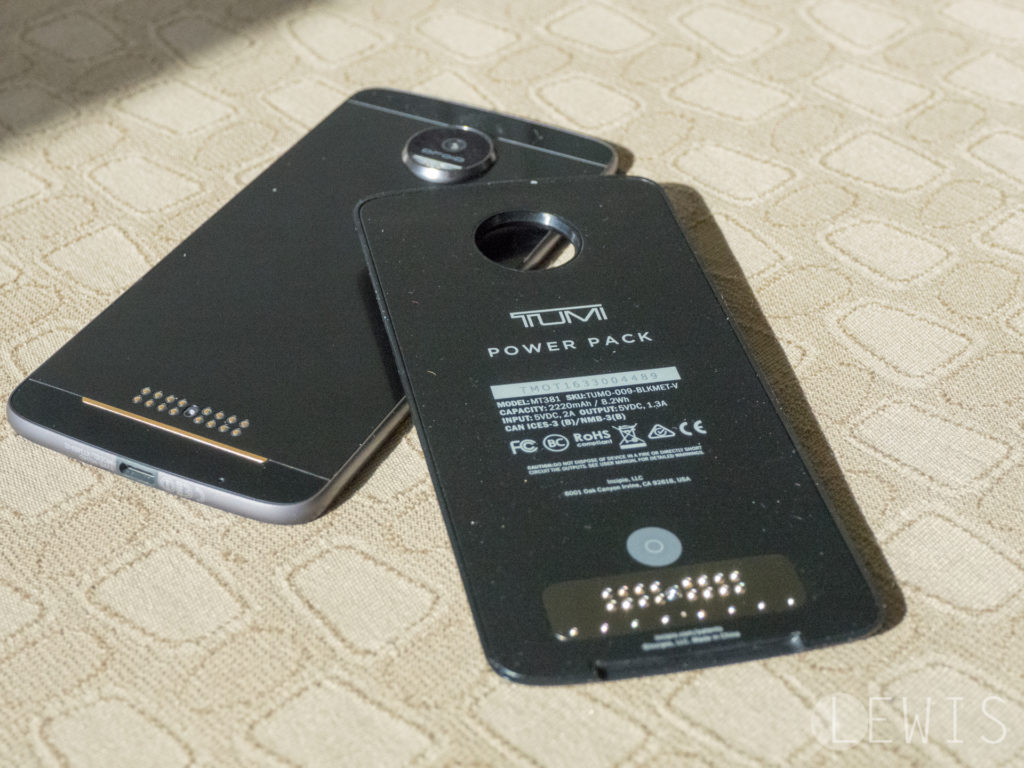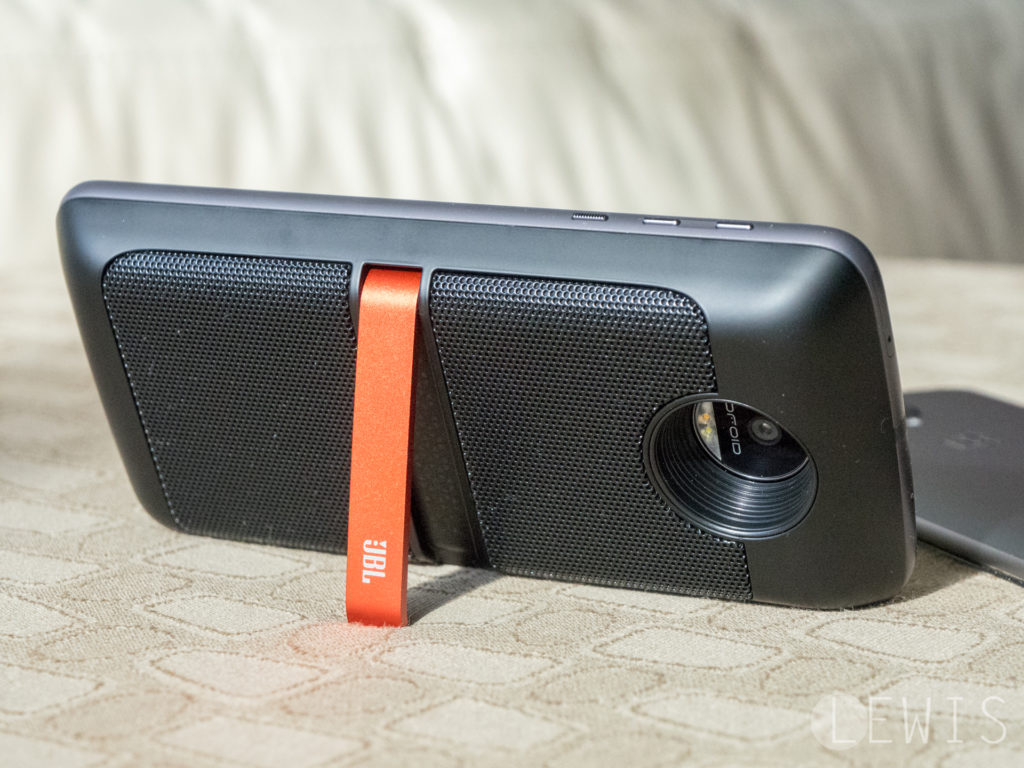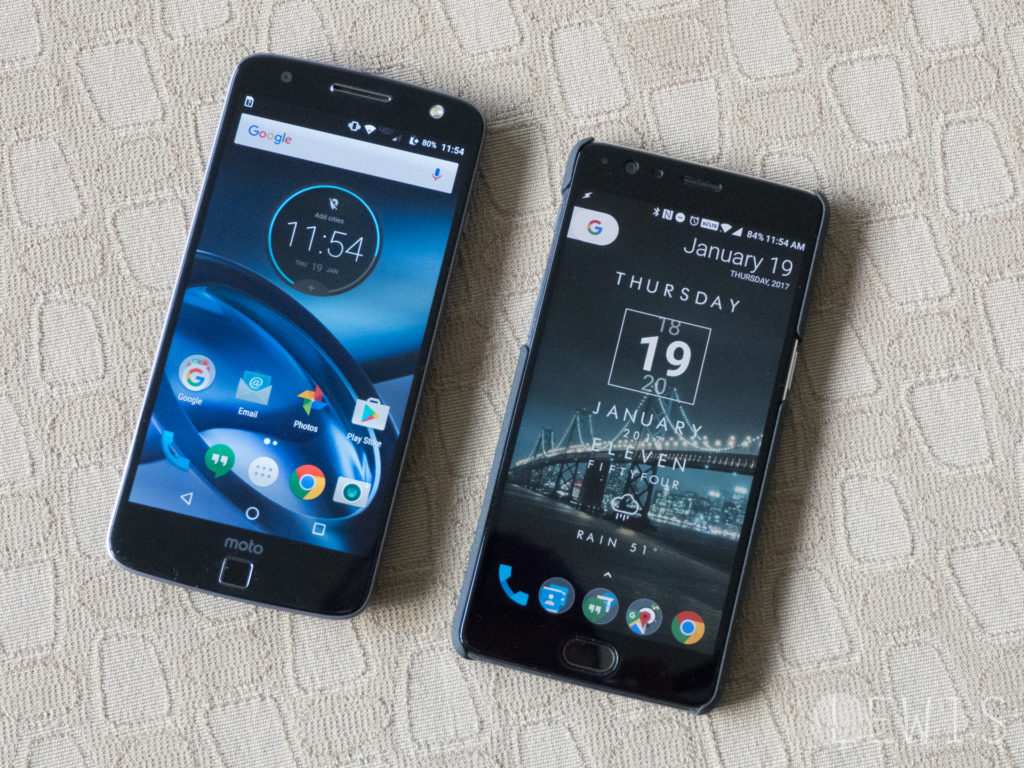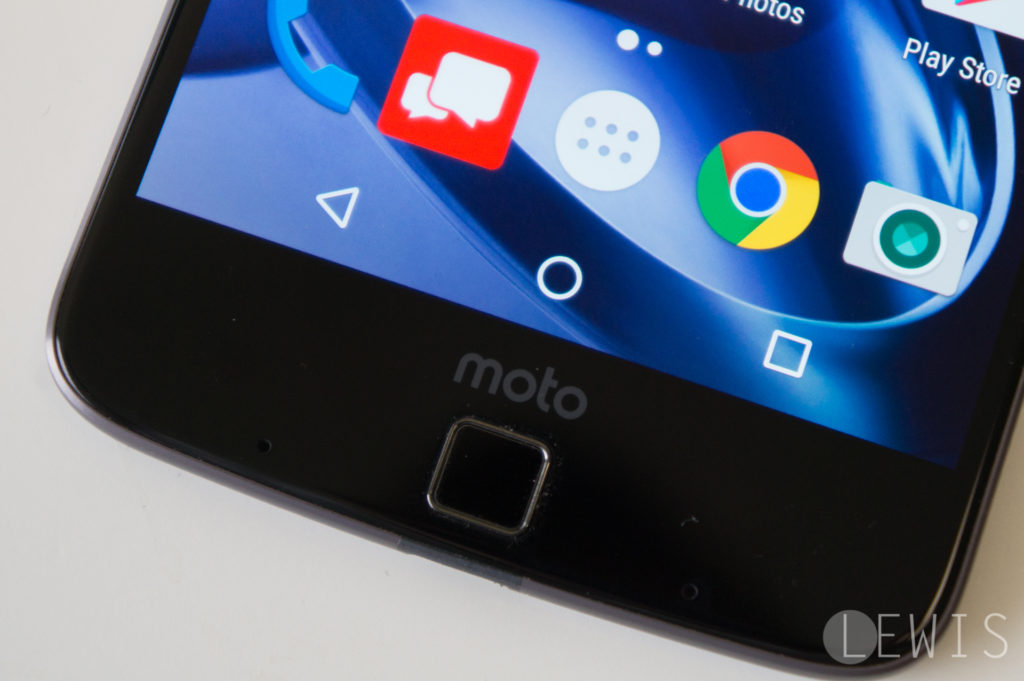When Motorola first announced the Moto Z and its modular attachments, I was excited. I loved the modular phone concept that LG started with the G5. But unlike the G5, the Moto Z could swap modules without shutting down the phone. I was baffled at how clunky LG’s modular design looked next to Motorola’s.
However, 6 months later, the Moto Z has seemingly faded into obscurity, but why? When Motorola reached out to see if I wanted to test out the Moto Z Droid, I jumped at the chance to answer my question: why isn’t the Moto Z more popular?
Here’s what I found.
Companies haven’t sold us on modular phones
After spending a month with the Moto Z, the biggest realization I came to is that no company has sold us on the idea of a modular smartphone yet. LG couldn’t do it, and Motorola hasn’t done it with the Moto Z.
Modular phones like Google’s now dead Project Ara, were supposed to extend the longevity of our devices by making specific components replaceable, like the camera, battery, and even processor. Think of it as building a PC with off-the-shelf parts versus buying a non-upgradable laptop.

There’s a lot of value in being able to replace parts yourself and that’s why my 5 year old desktop PC is still running strong. By replacing and upgrading parts throughout the years, my PC remains fast and sufficient for tackling all kinds of tasks. My 6 year old MacBook Pro on the other hand is on its last leg. Its battery is dying, its memory can’t be expanded further, and the processor is dog slow.
You’re still buying a phone that can’t be upgraded.
But modular phones aren’t like desktop PCs. You’re still buying a phone that can’t be upgraded. Sure you can slap a battery pack, speaker or projector on the Moto Z, but once the phone begins slowing down, those accessories (or “Mods” as Motorola calls them) become obsolete with your phone.
TL;DR: Phones like the Moto Z and LG G5 are modular to an extent, but are still phones with non-replaceable memory, processors, and cameras. Once the phone becomes obsolete, so does its ecosystem of mods.
The Moto Mods are a hit or miss

While I didn’t get to try every Moto Mod, I did get hands on with the JBL SoundBoost, TUMI PowerPack, and the Moto Style Shells. Overall, they were a mixed bag.
The Moto Z is too thin.
The Moto Style Shells should be the first mod you consider buying. Motorola loves bragging about how thin the Moto Z is, and it’s definitely svelte. But I think it’s actually too thin. By chasing thinness, Motorola compromised battery life by putting a small 2,600 mAh battery in the Moto Z. By comparison, most big Android phones rock 3,000 mAh batteries or bigger. While you won’t boost battery life with the Style Shells, at least the phone will feel good in your hand whilst getting rid of the huge camera bump.

If you want to extend your battery, the TUMI PowerPack is a good choice. It’s expensive at $80, but it gives the Moto Z an additional 2,220 mAh, which TUMI claims is good for an extra 22 hours of battery life. I had no issue getting the Moto Z to last two or more days on a charge with the battery pack.
The TUMI PowerPack fits nicely on the back of the Moto Z but does increase its thickness quite significantly. However, I love the way the PowerPack integrates with the phone’s software. Upon attaching the PowerPack to the Moto Z, I was alerted that there was a firmware update for the battery pack.

While I found it quite amusing to have to update a battery pack, it does show the tight integration between hardware and software in Motorola’s ecosystem. Users have the choice of when to use the PowerPack, either using it to keep the phone topped up or only having it kick in when the phone dips below 80%.
With the TUMI PowerPack, the Moto Z’s battery life is truly impressive, but at the cost of thickness and the inability to use a case with the phone.

Last but not least is the JBL SoundBoost. While some reviewers were impressed by its sound, I was underwhelmed. While the JBL SoundBoost attachment gets plenty loud, it distorts at high volume, rattling like a stanced-out Civic with a crappy subwoofer in the trunk. I expected more from JBL as I love their Bluetooth speakers, like the JBL Charge 3.
I was left wondering why someone would buy a JBL SoundBoost mod instead of buying a Bluetooth speaker instead. For one, the SoundBoost will only work with the Moto Z line of phones, so your friends and family won’t be able to use it. Secondly, it sounds significantly worse than JBL’s portable Clip 3 Bluetooth speaker, which is waterproof and costs just $54 on Amazon.
The Moto Z Droid is a pleasure to use
As a phone, there’s very little to dislike about the Moto Z Droid. It’s blazing fast, comes with Android 7.0 Nougat, and has handy gestures, like double twist to activate the camera. I benchmarked the Moto Z Droid against the HTC 10 and the OnePlus 3 and the Droid came out with the highest score by a small margin. In the real world, performance between all three of these phones is identical, which shouldn’t be a surprise as they all feature the same Snapdragon 820 chip and at least 4GB of RAM (the OnePlus 3 has 6GB of RAM).

Motorola has always done a good job keeping the Android operating system as stock as possible and that hasn’t changed. The Moto Z is up there with the OnePlus 3 for having the best near-stock Android experience, though OnePlus offers a lot more customization.
The only thing that bothered me about using the Moto Z was that it has no physical buttons, even though there’s room for them. This means the back, home, and multitasking buttons are virtual so you’ll have to slide up to see them when you’re in a full screen app. It also means there’s less real estate on the screen for icons on your home screen or content when you’re reading. I don’t understand why Motorola didn’t make the finger print sensor a home button too, as I found myself naturally wanting to touch the sensor to jump back home.

The Moto Z is a good phone but there are better choices
After spending a month with the Moto Z, I ended up really liking the phone. Its design is slick and it’s well built. I love that Motorola engineered a way to swap modules without needing to turn off the phone and some of the Mods are great.
However, if I had to spend my own money, I wouldn’t buy the Moto Z. At $624, the Moto Z is too close to the price of the Google Pixel and too expensive compared to value propositions like the OnePlus 3T and ZTE Axon 7 to recommend.

If you’re going to spend nearly $700 on a phone, the Google Pixel is the way to go. The Pixel has arguably the best smartphone camera on the market right now, is splash proof, and gets you the latest Android updates first. Oh, and you also get a headphone jack, which you don’t with the Moto Z, though they kindly include an adapter unlike the HTC Bolt.
For those who don’t want to spend $800 on a smartphone, the $440 OnePlus 3T is a tremendous value. As a OnePlus 3 owner, I’m happy to report that OnePlus has been doing an excellent job of providing updates, though it did take the company a few months to push Android 7.0 Nougat out.

This leaves the Moto Z in an awkward position; it’s too expensive, pricing it against powerful competition like the Pixel and iPhone. At the same time, value phones like the OnePlus 3T, ZTE Axon 7, and the myriad of budget smartphones are swaying customers away from flagship-priced phones. My OnePlus 3 performs just as well as the Moto Z in real life.
I like that Motorola, and its parent company Lenovo, took the risk to engineer a modular phone. I appreciate that the Moto Mods system works so well, but there just isn’t enough compelling reason to buy a modular smartphone at this point. I hope Motorola continues building a modular phone to push the segment forward, but I’m also afraid the company won’t be able to take these risks if it can’t sell its phones right now.
LG already threw in the towel with its modular phones and although Motorola has committed to releasing at least 12 new Mods per year, people have to buy the Moto Z in order for it to make business sense to continue making more Mods. I really want Motorola to continue making a modular smartphone as there’s a lot of potential in modular designs. However, the company must make mods that are compelling enough to drive people away from budget smartphones and other flagships. Only time will tell if Motorola is able to achieve this, but I hope it does.
